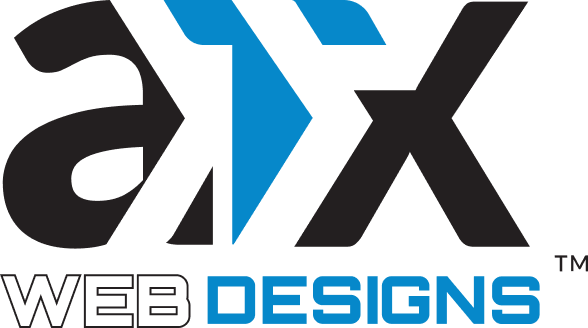In a city as vibrant and competitive as Austin, businesses need every advantage to stand out. One of the most impactful, yet often overlooked, aspects of digital marketing is how web design influences local SEO. For Austin business owners, optimizing web design isn’t just about making a site look attractive; it’s about making it work effectively to drive traffic, leads, and conversions. Here’s how a well-designed website can improve your local SEO, helping you reach more customers in Austin and surrounding areas.
What is Local SEO?
Local SEO (Search Engine Optimization) is a specialized strategy focused on improving a business’s visibility in local search results. Unlike traditional SEO, which aims to rank a website globally or nationally, local SEO targets potential customers in a specific geographic area. For example, when someone in Austin searches for “coffee shop near me” or “best HVAC services in Austin,” local SEO helps businesses that operate in Austin appear in those results.
- Mobile Optimization for On-the-Go Austin Users
In Austin, where tech-savvy consumers frequently use their smartphones to search for nearby services, having a mobile-friendly website is essential. Google’s mobile-first indexing means that search engines primarily use the mobile version of your site to rank it. When your website is optimized for mobile, it’s more likely to rank higher in search results. A responsive design automatically adjusts your website’s layout to fit different screen sizes, providing a seamless experience for users on any device.Failing to optimize for mobile can lead to a frustrating experience for users who will likely leave if they can’t easily navigate your site on their phones. A mobile-optimized design ensures your content is accessible and engaging, keeping users on your site longer, which signals to search engines that your site is valuable.
- Page Speed Matters for SEO and User Retention
Page speed has become a critical ranking factor for Google, and it’s particularly important in a fast-paced city like Austin, where users expect quick and efficient online experiences. Slow-loading pages frustrate visitors and increase bounce rates, which can negatively impact your search engine rankings. Local Austin web design services can help optimize your site’s speed by compressing images, leveraging browser caching, and minimizing JavaScript.A faster website not only improves your SEO but also enhances user satisfaction, making it more likely that visitors will stay on your site longer. By prioritizing page speed in your design, you’re catering to both search engines and your audience’s expectations.
- Optimizing for Local Keywords and Austin-Specific Content
One of the most effective ways to boost your local SEO is by incorporating Austin-specific keywords into your web design. Elements like the homepage title, meta descriptions, and headers are prime real estate for keywords. Including phrases like “Austin small business,” “Austin web design,” or “best coffee shop in Austin” can help search engines understand your site’s relevance to local searches.Austin-based businesses can also benefit from creating content that highlights local events, landmarks, or cultural references. Consider adding a blog section to your website where you can post articles about Austin-centric topics. When your website contains local keywords and relevant information, search engines are more likely to show it to users in the Austin area who are searching for related services.
- Schema Markup for Local Business Listings
Using schema markup (or structured data) is a powerful way to improve your site’s local SEO. This code helps search engines understand the type of business you operate and the services you offer. For Austin businesses, local business schema is especially valuable because it allows you to display important details in search results, like your address, phone number, business hours, and even customer reviews.Implementing schema markup can lead to rich snippets, which stand out in search results and can drive higher click-through rates. This not only boosts your local SEO but also makes it easier for potential customers in Austin to find and connect with you.
- Creating a User-Friendly Navigation Structure
A well-structured website is essential for SEO, as it allows search engines to crawl and index your pages effectively. For small businesses in Austin, an intuitive navigation structure can make it easier for users to find what they’re looking for, which improves the overall user experience and reduces bounce rates.Consider organizing your site’s menu logically and using descriptive labels for each section. Categories should flow naturally, and every important page should be easily accessible within a few clicks. A clean, organized structure also helps with internal linking, which can boost SEO by directing users and search engines to high-priority pages on your site.
- Integrating Google My Business with Your Web Design
For local businesses in Austin, a Google My Business (GMB) listing is a vital tool for local SEO. Integrate GMB into your website by embedding Google Maps with your business location and linking to your GMB profile. This simple addition helps search engines confirm your location and boosts your chances of appearing in local search results.Including Austin-specific elements on your GMB profile and website, such as mentioning neighborhoods like South Congress, East Austin, or The Domain, can also improve local visibility. When search engines see these connections, it increases your site’s credibility for location-based searches.
- Focusing on Customer Reviews and Testimonials
For Austin businesses, showcasing customer reviews on your website not only builds trust but also improves SEO. Search engines view user-generated content like reviews as credible and relevant, which can help boost your site’s ranking. Encourage satisfied customers to leave positive reviews on Google and display these reviews on your website.Including a review section on your website can also enhance the user experience, as potential customers are more likely to trust your business when they see genuine testimonials. For added SEO benefits, include Austin-specific keywords in your review responses and testimonials, like “serving Austin for over 10 years.”
- Using High-Quality, Relevant Imagery with Alt Text
In a visually appealing city like Austin, high-quality images of your business, products, and the local area can make a significant impact on website visitors. However, images also need to be optimized for SEO. Use descriptive, keyword-rich alt text for each image, such as “Austin bakery fresh pastries” or “web design team in Austin.” This practice not only helps search engines understand the content but also makes your site more accessible to visually impaired users.When done correctly, optimized images can appear in Google Image search results, giving your site another avenue to drive traffic. Including authentic, Austin-centric visuals helps to reinforce your business’s local identity, appealing to both customers and search engines.
- Building Trust and Credibility with an SSL Certificate
An SSL (Secure Sockets Layer) certificate is essential for any website today. Not only does it secure your site and protect customer data, but it also impacts SEO. Google has made SSL a ranking factor, meaning that websites without it may rank lower in search results. For Austin businesses that handle customer information or online transactions, an SSL certificate is a must.Displaying a secure site symbol in the browser address bar builds trust with users and can positively influence their decision to stay on your site. This simple web design element adds credibility and can improve your local SEO efforts by signaling to search engines that your site is trustworthy.
Final Thoughts: The Impact of Web Design on Local SEO for Austin Businesses
By focusing on these web design elements, Austin business owners can significantly improve their local SEO, ultimately driving more traffic and increasing their visibility within the community. Mobile optimization, page speed, local keywords, schema markup, and other design elements all contribute to a strong SEO foundation that supports growth. Embracing these best practices can help your business rise in search rankings, connect with more local customers, and ultimately thrive in Austin’s competitive market.
As Austin’s digital landscape continues to grow, an investment in quality web design will be increasingly essential for businesses looking to stand out and attract a loyal, local customer base.
Want to improve your small business’ online presence? Reach out to ATX Web Designs today for a free consultation on digital marketing strategies that could boost your reach and bring in new leads and customers!





